Time signature 6/8 is a common meter in popular and classical music. Each measure (or bar) has 6 eighth-note beats and these are grouped into two strong beats (more on this later). 6/8 has a pendulum feel to it and in this article we will see how this compares to other, similar time signatures.
We’re going to dive straight into 6/8 time, but you can find more info on all types of time signatures in our complete guide to meters.
What is time signature 6/8?
The time signature or meter 6/8 is show in the music as a 6 above an 8.

This comes before the music starts but after the clef and key signature. The ‘6’ stands for 6 beats per measure and the ‘8’ tells us that each beat is an eighth note. This means that the notes in each measure will add to a half note (or minim).
See if you can spot the six eighth note beats in this passage of music.

Now here it is with the beats labelled.

What Type of Meter is 6/8
There are three broad types of time signature: simple, compound and irregular. Simple time signatures have beats that divide into two. Compound time signatures have beats that divide into three and irregular time signatures have a mixture of beats.
In time signature 6/8, the 6 eighth notes are grouped into two groups of three. This means that although 6/8 has 6 beats, it also has only 2 strong beats because of this grouping. You can see this in the image below.

Each strong beat is worth 1 dotted quarter note and is divided into 3 eighth notes. As each strong beat divides into three, 6/8 is a compound meter.
Can you spot where the strong beats fall in the music below?

Here it is with the strong beats labelled.
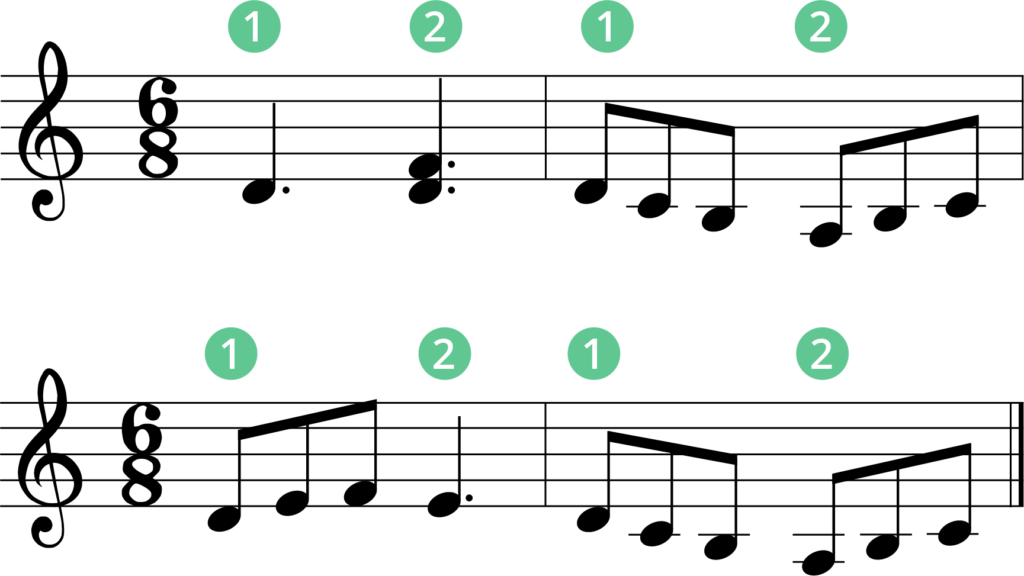
Here is the opening to Chopin’s Nocturne Opus n3. It contains more complex rhythms with a variety of note lengths, however this piece would still be grouped into the two strong beats per measures (each worth a dotted quarter note). Can you spot where each strong beat falls?
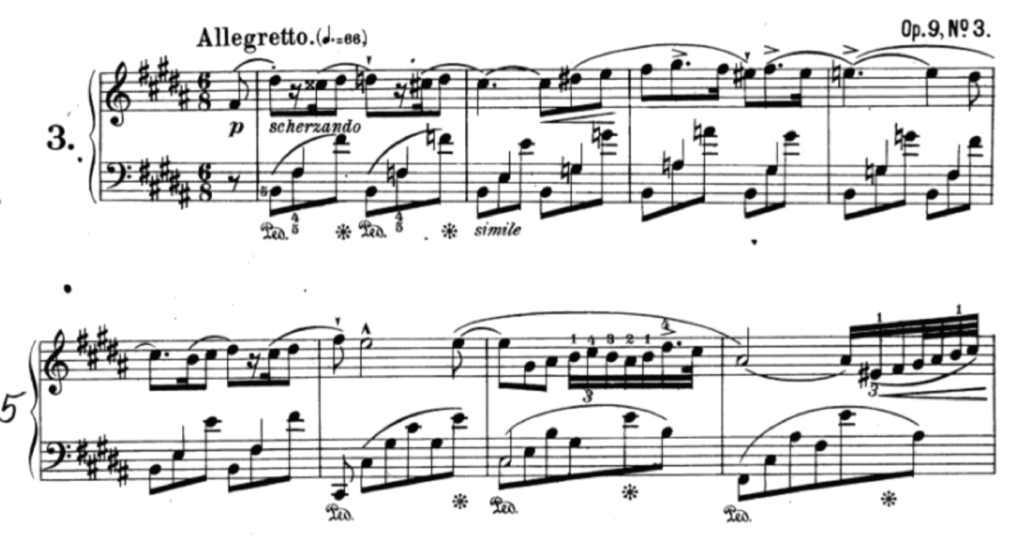
Now here it is with the strong beats added.
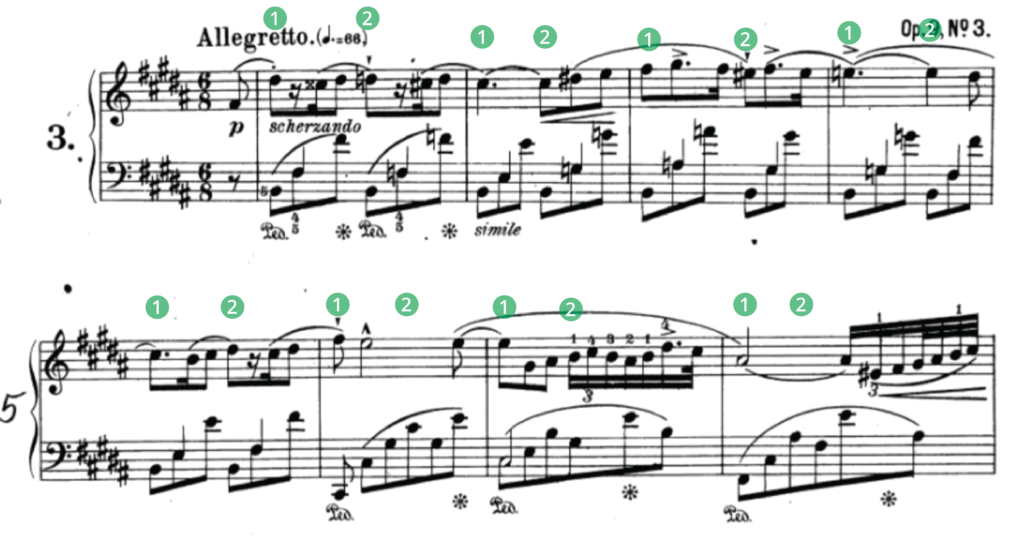
How do we count in 6/8
You might think that we count 6/8 as 1..2..3…4..5…6 but this is wrong! The reason for this is because we use the strong beats. Counting 1,2,3,4,5,6 would not give us the pendulum motion of this meter.
Instead we count 1…and…ah…2…and….ah. There is a emphasis on the start of each strong beat and this gives 6/8 it’s rolling effect. To learn more about other compound time signatures, check out our ultimate guide to time signatures.
Below is the start of Metallica’s ‘Nothing Else Matters’. You can see that the eighth notes are grouped in threes to show the strong beats. The counting has been labelled too.

Songs with a 6/8 Time Signature
The Animals – House of the Rising Sun
Seal – Kiss From a Rose
Queen- We are the Champion
Metallica – Nothing Else Matters
Ear Training and Meters
To develop as a musician you’ll want to be able to recognise time signatures by ear. This is where ear training comes in, as the more you practice, the better your’ll get.
My recommendation for this is Tonegym as they have a comprehensive and fun program for training your ears. It’s what has gotten the best results with for my own students.
They have a great game called ‘Rhythmania’, were you have to read rhythms in different meters and tap them back using the spacebar. I like how Tonegym structure the game so it always gives you the right level of challenge.
For an in-depth look at ear training, here’s my full review of Tonegym.
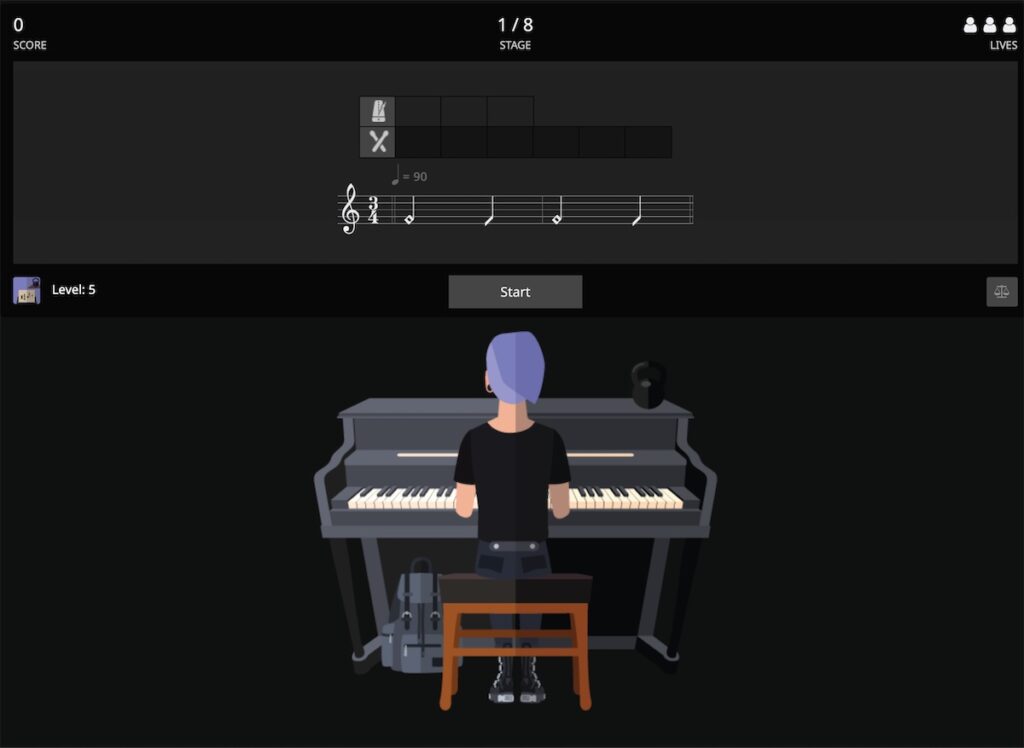
What’s the difference between 2/4 and 6/8?
The difference between these two meters are how the beats are divided. 2/4 has two quarter-note beats per measure. Each of these divides into two eighth notes.
time signature 6/8 also has two strong beats but each one divides into three. Each strong beat is worth a dotted-quarter note and divides into three eighth notes.
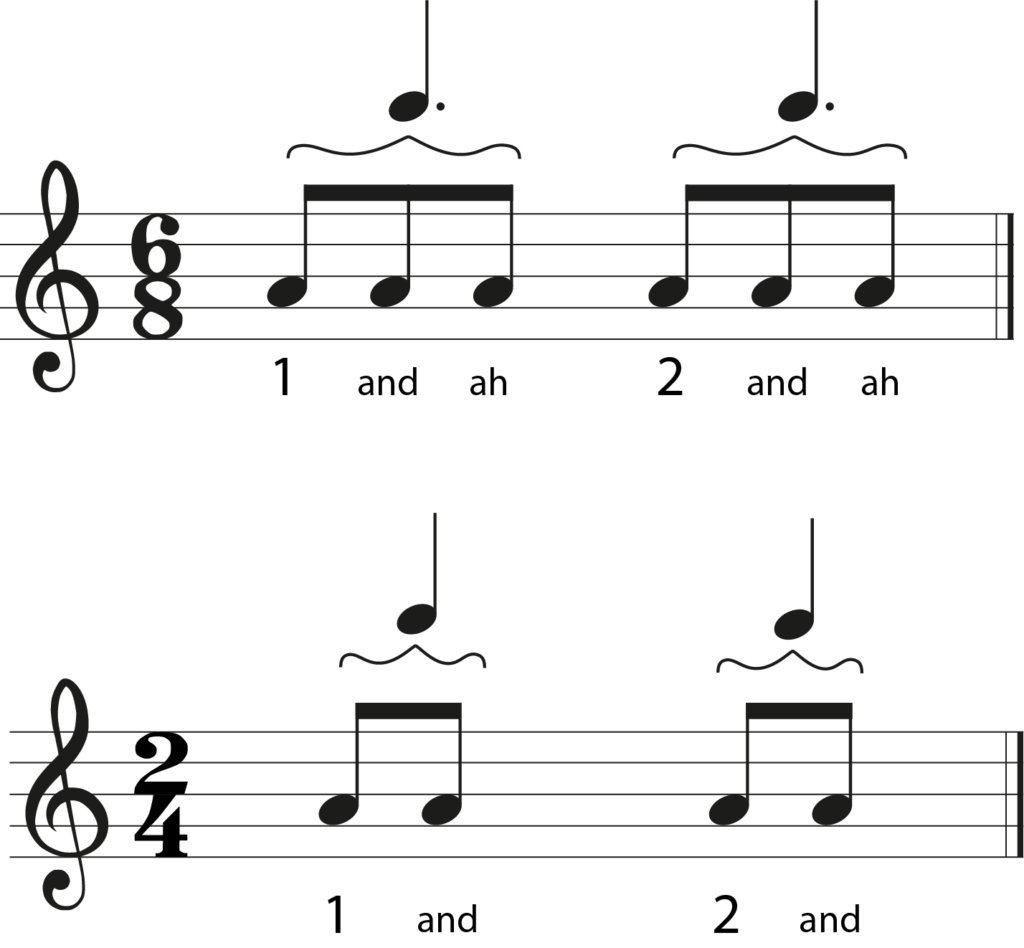
When listening to each of these you will hear that 2/4 has a march-like feel or 1..2…1…2…1….2. In contrast 6/8 has a lilting, rolling feel of the 1…..and…..ah…..two…..and….ah.
What’s The Difference Between 3/4 and 6/8?
On the face of it 3/4 and 6/8 are quite different time signatures. 6/8 is has 6 eighth notes per measure and these are grouped into two groups of three. 3/4 has 3 quarter-note beats per bar and these can divide into two eighth notes. In short: time signature 6/8 is a compound meter and 3/4 is a simple meter.
The problem comes with the fact that we are counting in groups of three for both! The difference is that 6/8 has TWO groups of three per measure and 3/4 has ONE group of three for each measure.
A slow song in 6/8 can often feel like it’s in 3/4 because we can mistake the slow 6/8 bar with two bars of 3/4. Listen to John Mayer’s ‘Gravity’ which is actually written in 6/8. However because the tempo is slow, it feels natural to count it in 3/4.
Equally a fast song in 3/4 can feel like it has been written in 6/8. This is because the fast 1..2..3..1..2..3 can feel like one measure of 6/8.
The key to spotting the difference is the pendulum feel of 6/8, as this contrasts with the repeating 1..2..3 of 3/4 (think waltz). In The Animals ‘House of the Rising Sun’ you can hear the pendulum swing of the 6/8 time signature.
Now listen to ‘Waltz 2 (XO) by Elliot Smith’for a straight 3/4 time signature.
What next…?
If you want to learn more about time signatures, check out our complete guide to meters.
What to learn more about music theory, take a look at our guide to the circle of fifths here.
